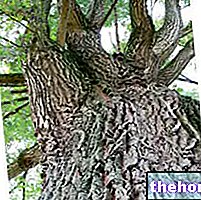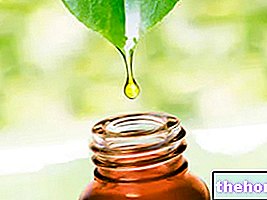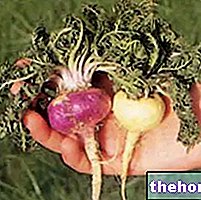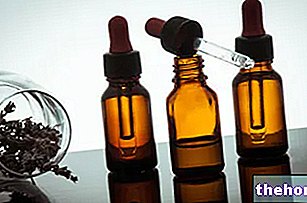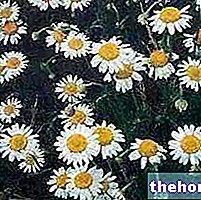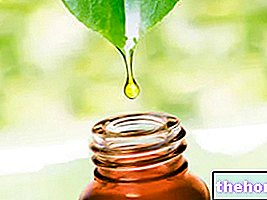Jasmine in history
Jasmine is an evergreen climbing shrub or tendril, native to China, western Asia and northern India. From the reading of some sources, jasmine seems to have been imported into Europe around 1500, by the Spaniards; however, some authors are perplexed about it, since the ancient findings concerning the “Liber de Simplicibus” Code move the date of importation to the previous century, considering the representation of jasmine in this text dating back to 1415.

Term analysis
The flower is also known as white jasmine, common jasmine, jasmine of the poets or again, Jasmine or jessamine. The name "jasmine" seems to have Persian origin (yasamin): over time, the word mulberry was superimposed on the original term yasamin, giving rise to the current name recognized for the flower. In botany, jasmine is Jasminum officinale and, when referring to the pendulous variety, J. grandiflorum (the most common species include the jasmine of Catalonia and that of Spain).
Botanical analysis
Jasmine belongs to the Oleaceae family, the same as ash, olive and privet: it is an evergreen plant characterized by opposite leaves - each made up of 5-7 leaflets - and by small fragrant white flowers. Not surprisingly, the cosmetic and perfumery industry extracts jasmine essential oil for the formulation of scented creams and essences.
Jasmine has a typical climbing pattern, with thin and fragile stems; the plant blooms in the warm months, from July to September in particular. In any case, jasmine is a "strong" plant because it can withstand even very harsh temperatures, even below zero; in fact, although the frost can destroy the branches of the jasmine, the roots are unlikely to be heavily affected.
Jasmine essential oil
As we have seen, jasmine is also widely cultivated for its very fragrant and refined essence: the essential oil is extracted from the petals, which preserve the essence inside some epidermal pockets placed on the inner face of the flower itself. [adapted from Reasoned dictionary of herbal medicine and phytotherapy, by A. Bruni]
Among the main constituents, we mention: linalyl acetate, linalool, benzoyl acetate, phenylacetic acid, farnesol and, above all jasmone, the ketone characterizing the extract and responsible for the typical fragrance. [Taken from Encyclopedia of Essential Oils, by J. Lawless]
The chemical components are extracted by steam distillation or enfleurage.
Herbal uses
Jasmine is also used in the herbal-phytotherapeutic field for its antispasmodic and antirheumatic properties: for these purposes, the variety is considered in particular Gelsemium nitidum, typical of the Americas.
Bath salts with jasmine essence are used as a mild sedative and relaxing: it is no coincidence that the chemical compounds act at the cerebral and psychic level, restoring a firm and relaxed character.
Jasmine is also used against diseases affecting the respiratory system, such as cough, hoarseness, phlegm and mild laryngitis.
For internal use, it is also recommended in case of menstrual pains and uterine pains in general.
It seems that jasmine is able to induce optimism and euphoria: in this regard, it is used to counteract depressive states and irritability.
In popular medicine, it is said that the power of jasmine is such as to eradicate envy and jealousy from the people who suffer from it; still, according to tradition, jasmine would help to assume one's responsibilities and to become aware of how one acts and behaves.
Homeopathy
Jasmine is also used for homeopathic purposes: the mother tincture obtained from the roots of the flower seems to act positively in case of myasthenia, insomnia, migraine, memory loss and, again, colds and localized motor paralysis. [adapted from Reasoned dictionary of herbal medicine and phytotherapy, by A. Bruni]
Cosmetics
Thanks to the particular and unmistakable fragrance of jasmine, intense but at the same time delicate, cosmetics wisely use its essence to create perfumes, scented waters, lotions and creams. The most felt problem is represented by the cost: to obtain 1 kg of essence, they must use as many as 8,000 flowers. To avoid burdening the price of the finished product, we often use synthetic products that imitate - albeit perfectly - the essential oil of jasmine.
Tradition and legends
According to an Arab belief, heaven is pervaded by jasmine flowers: not surprisingly, the flower is often used as a symbol of divine love.
In ancient times, jasmine symbolized immortality, while in Spain it has always been considered a symbol of sensuality.
The white color of jasmine flowers indicates affection and love, red indicates desire, while yellow indicates happiness.
Summary
Jasmine: to fix the concepts ...
Hypothesis N ° 2: jasmine has been present in Europe since 1400 (figure of the flower imprinted in the Code Liber de Simplicibus)
- Synonyms in the common language: white jasmine, common jasmine, jasmine of the poets or again, Jasmine or jessamine
- Origin of the term: shutters (yasamin)
- In botany, jasmine is Jasminum officinale or J. Grandiflorum (pendulous variety)
- Family: Oleaceae
- General description: evergreen climbing plant. It is a "strong" plant because it can withstand even very harsh temperatures, even below zero
- Leaves: opposite, each formed by 5-7 leaflets
- Flowers: small, white and very fragrant
- Stem: thin and fragile
- Roots: hardly affected by frost
- Flowering: July-September
Enfleurage
- Herbal-phytotherapeutic field of jasmine: antispasmodic and antirheumatic properties
- Mild sedative and relaxing
- Useful in case of diseases affecting the respiratory system: cough, hoarseness, phlegm and mild laryngitis
- Internal use: jasmine is also recommended in case of menstrual pains and uterine pains in general
- Induces optimism and euphoria
- The power of jasmine is such that it eradicates envy and jealousy from the people who suffer from it
- Jasmine would help you take responsibility and become aware of how you act and behave
- Ancient belief: "paradise is pervaded by jasmine flowers"
- Symbol of divine love
- Jasmine symbolizes immortality
- Symbol of sensuality (Spain)
- White color of jasmine flowers indicates affection and love, red indicates desire, while yellow indicates happiness
Select plant Fir Acacia Acerola Sorrel Yarrow Yarrow Yarrow Aconito Adatoda Garlic Agnocasto Agrimonia Alchemilla Alkekengi Aloe Altea Witch Hazel Ammi or Visnaga Pineapple Andrographis Anemone Pulsatilla Angelica Anise Star Anise Japanese Star Anise Bitter Orange Bitter Areca Arnica Harpagophytum Arpagophyte Artemisia Asteragus Basil Asparagus Asparagus Peruvian Asparagus Asparagus Asparagus Hawthorn Boldo Borage Shepherd's Purse Boswellia Bucco Butea superba Cocoa Coffee Cajeput Calamus Calamus Marigold Camedrio Chamomile Roman Chamomile Camphor Cinnamon Ceylon Maidenhair Capuchin Artichoke Cardamom Cardiac Thistle Asian Thistle Carvi Cascara Cassia Catecu Catha Cabbage Celandine Chicory Centaurea Cinnamon Cypress Celandine Chives Cypress Coca Cola Colchico Combreto Condurango Comfrey Coriander Cranberry Barberry American Chrysanthemum Cumin Turmeric Damiana Digital Dioscorea Drosera Dulcamara Dunalilella Echinacea Eder a Ephedra Elenio Eleutherococcus Helichrysum Evening primrose Horsetail Alfalfa Erica Euphrasia Erisimo Escolzia Eucalyptus Farfara Farfaraccio Calabar bean Fenugreek Fennel Phytolacca Frangola Ash Fumaria Japanese Mushrooms Galega Ganoderma lucidum Garcinia Cambogia Mulberry Gentian Broom Ginkgo Ginkgo Guipana Guipana Gynestra Ginkgo Hibelia Gymnasium Hibiscus Guarulp St. John's Wort Horse Chestnut Ispaghul Hyssop Jaborandi Kava kava Konjac Laminaria Cherry Laurel Lavender Lemongrass Lespedeza Lovage Icelandic Lichen Lemon Flax Lippia Licorice Lobelia Hops Maca Marjoram Maize Mallow Manna Marrubio Marrubio d "water Matè Melaleuca Meliloto American Lemon balm Myrtle Myrama Walnut Nutmeg Walnut vomica Olive tree Meadowsweet Ononide Opuntia Oregano Orthosiphon Nettle Poppy Papaya Parietaria Feverfew Passiflora Chilli Perilla Periwinkle Phyllanthus Plantain Picrorhiza Pilosella Pino Pisci dia Podofillo Polygala Grapefruit Parsley Psyllium Pueraria mirifica Butcher's broom Pygeum Quassia Oak Rhubarb Ratania Rauwolfia currant Castor bean Rhodiola Rosehip Rosemary Rue Willow Sarsaparilla Sage Elderberry Sassafras Sedum Ergot Senna Serenoa Repens Soybean Solidago Tansy Taraxus Tamarind Tamarind Tamarind Tamarind Tamarindo Ursina Valerian Vanilla Mullein Verbena Veronica Viburnum Vinca Pansy Mistletoe Vine Withania Yohimbe Saffron Ginger Pumpkin Select disease Juvenile Acne Rosacea Tinnitus Tinnitus Aerophagia Tendon Affections Afonia Aphthae Algias Functional Halitosis Breastfeeding Allergy Anemia Anguish Anxiety Arteriosclerosis Asthrosis Asthrosis Arthritis Arthritis Men Sex Woman Blepharitis and Conjunctivitis Eye bags Bronchitis Gallstones Kidney stones Salivary stones Baldness Androgenetic Candida Fragile hair Caries Headache Cellulitis Motion sickness Cystitis C limaterio Cholecystopathy High cholesterol Ulcerative colitis Colonoscopy Contusions Hematoma Convalescence Couperose Depression Dermatitis Diaper dermatitis Diabetes Diarrhea Erectile dysfunction Dyslipidemia Dysmenorrhea Dyspepsia Disturbances of vision Hemorrhoids Epistaxis Herethism Heart disease Fever Fibromyalgia Gastro-intestinal disease Flatulence Hypertension Fibromyalgia Gastrointomnia Jaundice Laryngitis Renal lithiasis Toothache Sore throat Thinness Menopause Meteorism Mononucleosis Alzheimer's disease Crohn's disease Nausea Vomiting Obesity Dark circles Onychomycosis Osteoporosis Dry skin Periarthritis Piorea Low pressure Prostatitis Psoriasis Colds Breast fissures Anal fissures Gastro-nasal rhinitis Senescence Premenstrual Syndrome Sinusitis Quit smoking Overweight Fatty liver Constipation Stomatitis Stress Cough Triglycerides high Ulcer Burns Nails Brittle flashes Heat Warts Dizziness Properties herbal Tanning Abortive adaptogenic Aphrodisiac bittering analgesic anesthetic anorectics analgesic antacid anti-allergic anti-asthmatic Antibiotic catarrh Anticellulitiche anticonvulsant Antidiaforetiche antidiarrheal edematous anthelmintic antiemetic Antiemorroidarie antiphlogistic Antiidrotiche Antinevrotiche Antioxidants antipyretic antirheumatic antiscorbutic Antiseptic antispasmodic anti-uric Aperitive Flavoring Astringent Balsamic Bechiche Capillarotrope Cardiotonic Carminative Cathartic Caustics Healing Cholagogues Choleretic Dyes Decongestants Deodorants Purifying Diaphoretic Cleansers Disinfectants Detoxifiers Thirst quenching Diuretics Exciting Emetics Emmenagogues Emollients Hemostatic Energies Hepatoprotectors Expectorants Eupepticus Moisturisers Galactosensitizers lanti Hypertensive Hypnotic Hypoglycemic Hypotensive Irritants Laxatives Soothing Narcotic Nerves Nutrients Odontalgic Pectoral Purgative Revulsive Remineralizing Refreshing Rubefacient Scialagoghe Sedative Soporifugas Sneezing Stomachic Stomatics Narcotic Vascular Tightenitis

